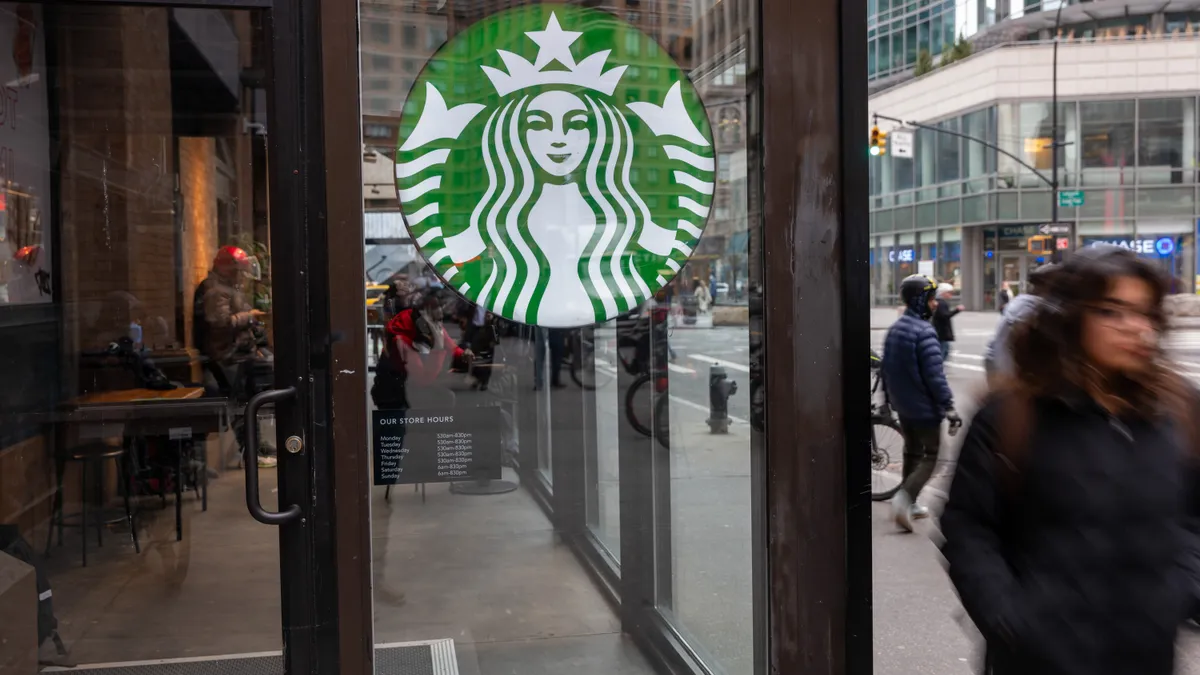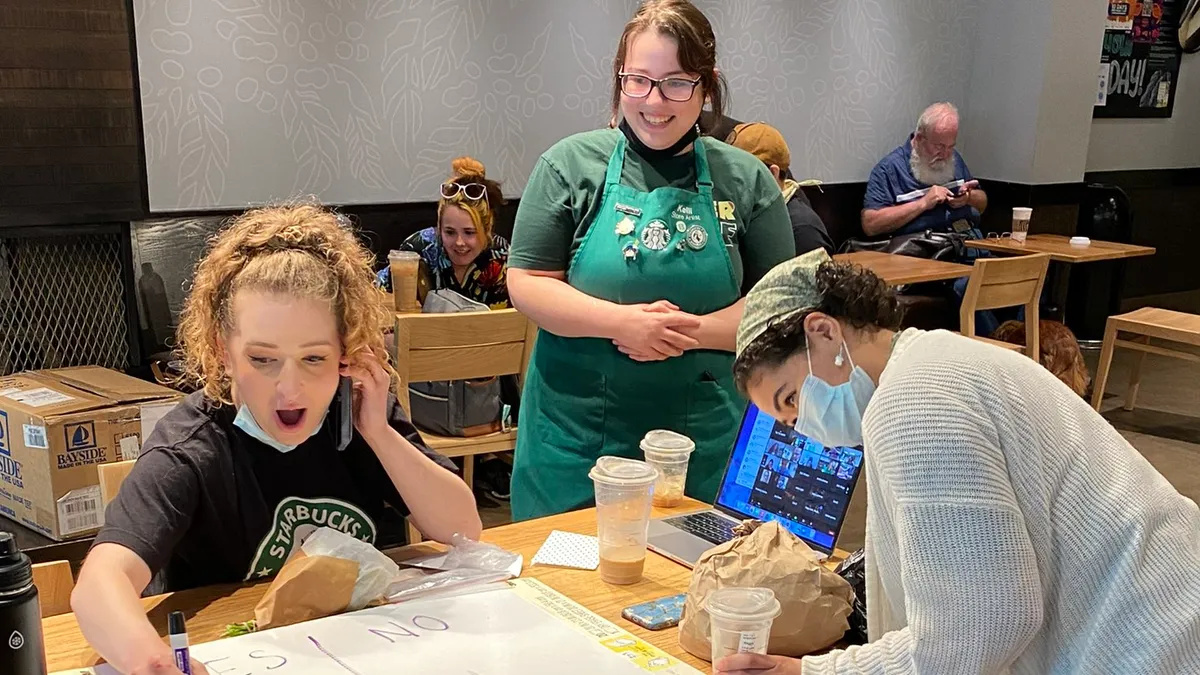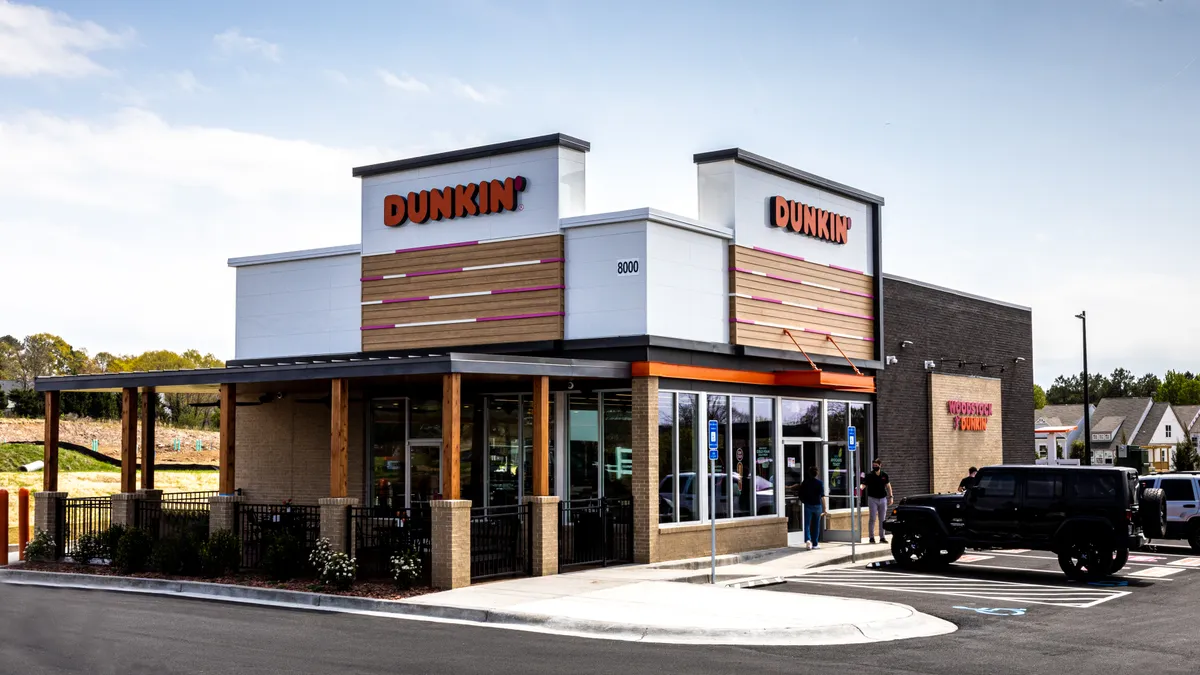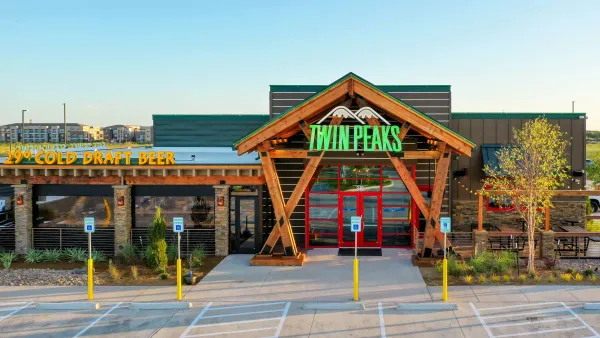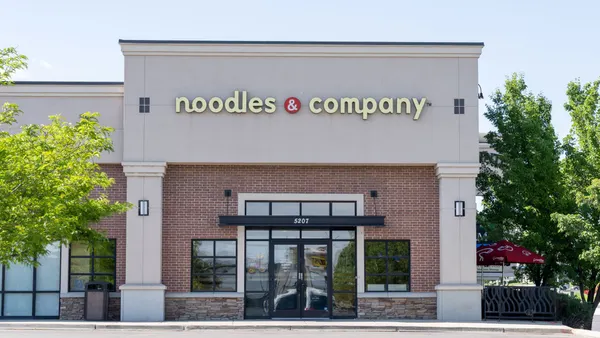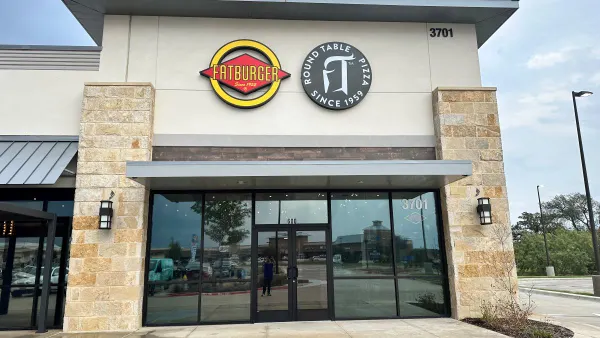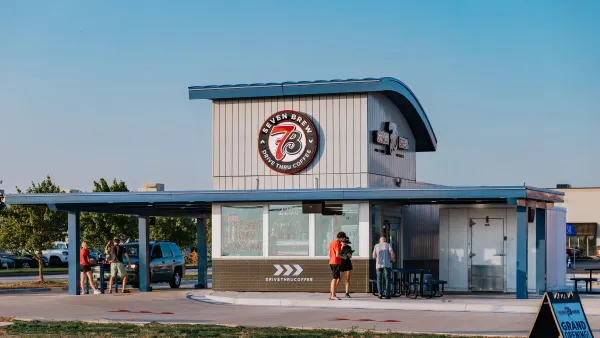Editor’s note: This story has been updated to include a statement from Starbucks.
Dive Brief:
- Starbucks is offering performance-based compensation awards for executives tied to the Back to Starbucks plans, according to a filing with the Securities and Exchange Commission on June 29.
- The awards, which have a target value of $6 million, consist of a grant of performance-based restricted stock units that vest after fiscal year 2027.
- Executives will receive the stock grants if the company meets cost-reduction goals, and leaders can earn twice the money if Starbucks hits additional goals related to “(i) the rollout of the Company’s Green Apron Service program, (ii) coffeehouse uplifts, (iii) new food and beverage platforms, and (iv) a reimagined Starbucks Rewards program,” according to the 8-K.
Dive Insight:
The stock awards show that among Starbucks’ key goals for the next two years, reducing costs is its highest priority. The additional goals are part of CEO Brian Niccol’s effort to renovate the brand and return its focus to the shopfloor.
The Green Apron Service model, for instance, “combines and unifies new service standards and expectations, changes to partner plays and deployment, streamlined routines, and our order sequencing algorithm,” Niccol said on the brand’s fiscal Q2 2025 earnings call.
Starbucks is in the middle of a transition toward an on-premise, coffeehouse focus. The early steps of that plan included the return of ceramic mugs for in-store orders, the restoration of the condiment coffee bar, improved seating, and handwritten notes on cups, according to the earnings call.
But going forward, Starbucks will renovate large numbers of cafes to meet new, warmer design standards. Niccol said on the earnings call that the chain was balancing the need for renovations with cost: “uplifts feel premium, but keep renovation costs down and minimize closure days.”
Starbucks also has cut a large number of menu items, but the new incentives signal the brand has a long-range strategy to use new menu items to draw in consumers. This menu strategy is likely to include coffee-forward beverages, in keeping with Niccol’s narrowed idea of the brand’s identity. The relatively new Cortado beverage platform is a good example of what a coffeehouse-focused menu innovation move might look like.
The changes to the rewards program, meanwhile, likely mean a shift away from aggressive discounting, given Niccol’s comments on the most recent earnings call. Starbucks, he said, had been discounting too much through its rewards program and was trying to build up transactions through the program that are not based on discounting.
Starbucks Workers United, which represents baristas at about 500 stores, said the bonuses reflected misaligned priorities.
Jasmine Leli, a unionized barista and bargaining delegate, said in a statement emailed to Restaurant Dive that the bonuses were “a ridiculous and irresponsible step for Starbucks at a moment when ‘Back to Starbucks’ isn’t working” and that the company would be better served by investing that money in hourly workers.
In a statement emailed to Restaurant Dive in response to SBWU’s comments, Starbucks highlighted the benefits it offers to workers who work more than 20 hours a week and said its benefits package it pays such workers is the equivalent of more than $30 an hour.
“A strong and successful Starbucks is in the interest of every partner,” A Starbucks spokesperson wrote. “Our commitment is to ensuring Starbucks is the best place to work for every partner (employee).”
The brand’s median employee earns less than the federal poverty line for an individual.



